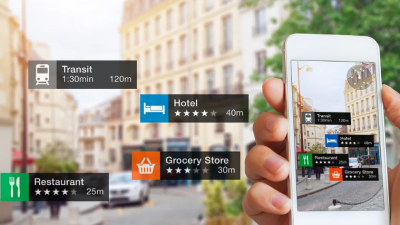Augmented reality has come a long way since its early days of simple visual overlays.
Today’s AR experiences are becoming increasingly interactive and immersive.
At the heart of this evolution is conversational AI – technology that allows users to interact with AR environments through natural language.
This fusion creates experiences that feel less like using technology and more like collaborating with an intelligent assistant.
Breaking Down Communication Barriers
Traditional AR interfaces often rely on complex gesture controls or button presses.
These can be unintuitive for new users and limit accessibility.
Conversational interfaces remove these barriers by allowing users to simply speak their intentions.
“Show me restaurants nearby” becomes an immediate visual display of options in your field of view.
This natural interaction method dramatically reduces the learning curve for AR adoption.
Creating Contextually Aware Experiences
Modern conversational AI systems understand more than just words.
They analyze tone, sentiment, and context to deliver appropriate responses within AR environments.
When you express frustration with a task, AR systems can offer additional guidance or simplify the experience.
This emotional intelligence creates more satisfying user journeys, as noted by experts at AR Marketing Tips.
These contextually aware systems remember past interactions, building a more personalized relationship with each user.
Multi-modal Interaction Enhances Engagement
Conversational AI in augmented reality isn’t limited to voice alone.
Today’s systems blend voice commands with visual cues, gesture recognition, and environmental awareness.
This multi-modal approach creates more intuitive interactions.
You might point at an object while asking, “What’s that?” and the AR system understands both your verbal question and visual reference.
These natural interaction patterns make AR experiences feel seamless and magical.
Real-world Applications Transforming Industries
Retail environments are being revolutionized through conversational AR assistants.
Shoppers can ask detailed questions about products they see and receive tailored recommendations.
In healthcare, medical professionals use voice commands to access patient data while keeping their hands free for procedures.
Manufacturing facilities implement conversational AR for hands-free equipment maintenance guidance.
Tourism experiences are enhanced when visitors can have natural conversations about landmarks they’re viewing through AR glasses.
Overcoming Technical Challenges
Despite tremendous progress, conversational AR faces significant challenges.
Noisy environments can hamper voice recognition accuracy.
Privacy concerns arise when systems are constantly listening for commands.
Processing complex language in real-time requires substantial computing power.
Developers are addressing these limitations through improved noise-cancellation, edge computing, and more efficient AI models.
Designing Effective Voice Interfaces for AR
Creating successful conversational AR experiences requires thoughtful design considerations.
Voice prompts must be concise and clear, avoiding information overload in the visual field.
Visual feedback should confirm voice commands were understood correctly.
The system’s “voice” should match the brand personality and target audience expectations.
Response times must be nearly instantaneous to maintain the illusion of natural conversation.
Personalization Through Conversational Data
Each interaction with a conversational AR system provides valuable data.
This information helps the system learn user preferences over time.
A museum AR guide might note your interest in contemporary art and gradually emphasize similar exhibits.
Fitness applications can adjust workout suggestions based on verbal feedback about difficulty levels.
This continuous learning creates increasingly personalized experiences with each use.
The Future of Conversational AR
As natural language processing continues to advance, conversational AR interfaces will become even more sophisticated.
We’ll see systems that can maintain complex, multi-turn conversations while users navigate AR environments.
Cultural and dialectical understanding will improve, making these systems more accessible globally.
The distinction between digital assistants and AR interfaces will blur into seamless ambient computing experiences.
Implementation Considerations
Organizations looking to implement conversational AI in their AR experiences should:
Start with focused use cases that solve specific user problems rather than implementing conversational interfaces everywhere.
Conduct extensive user testing with diverse accent and dialect samples.
Design fallback mechanisms for situations where voice interaction might fail.
Consider the ethical implications of voice data collection and storage.
Conclusion
Conversational AI interfaces are fundamentally changing how we experience augmented reality.
By making interactions more natural and intuitive, they’re lowering barriers to AR adoption.
The combination of visual augmentation with natural language understanding creates experiences that feel less like technology and more like having a knowledgeable companion.
As these technologies continue to mature, we’ll see conversational AR become an increasingly integral part of how we interact with both digital information and the physical world around us.





